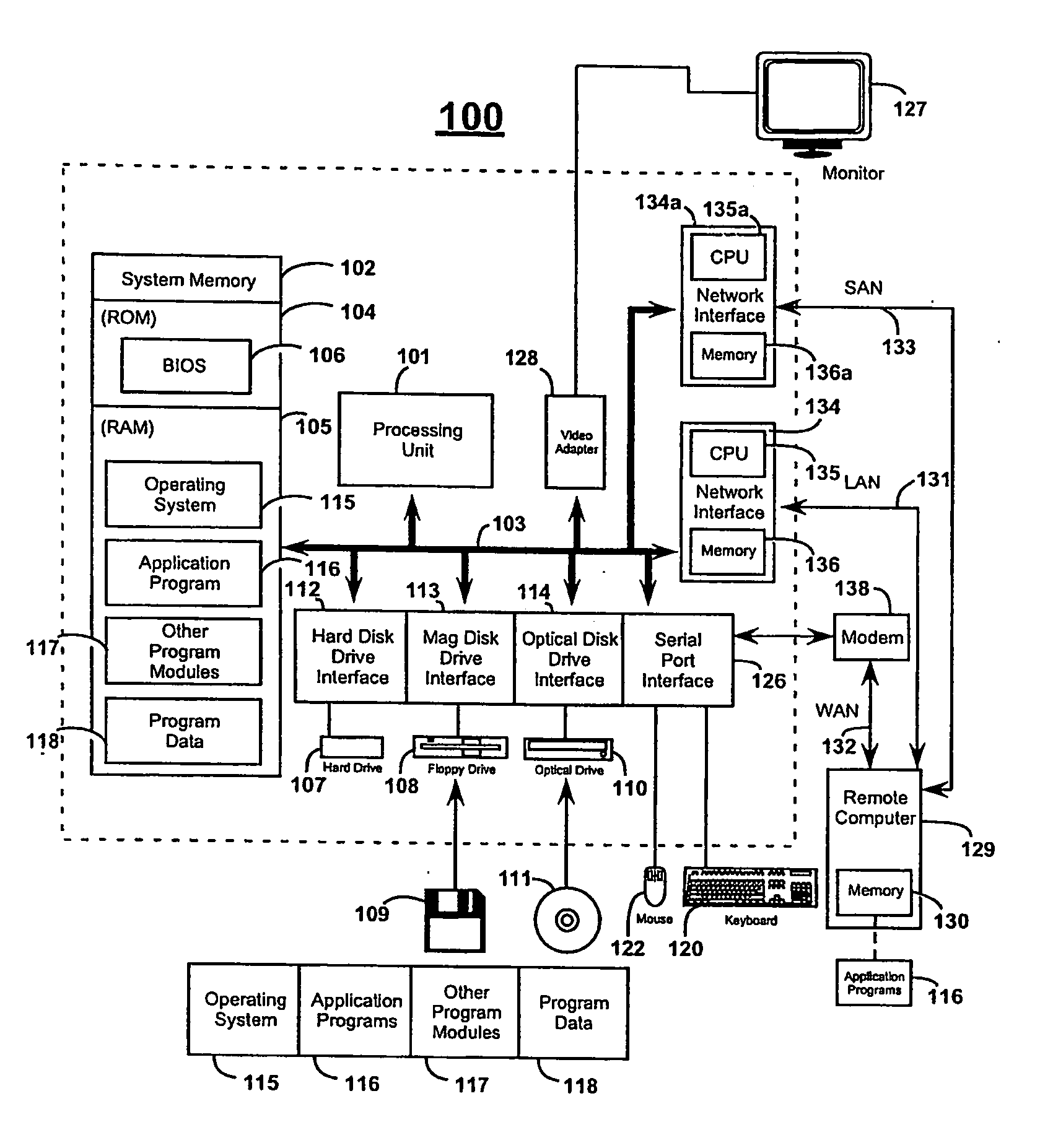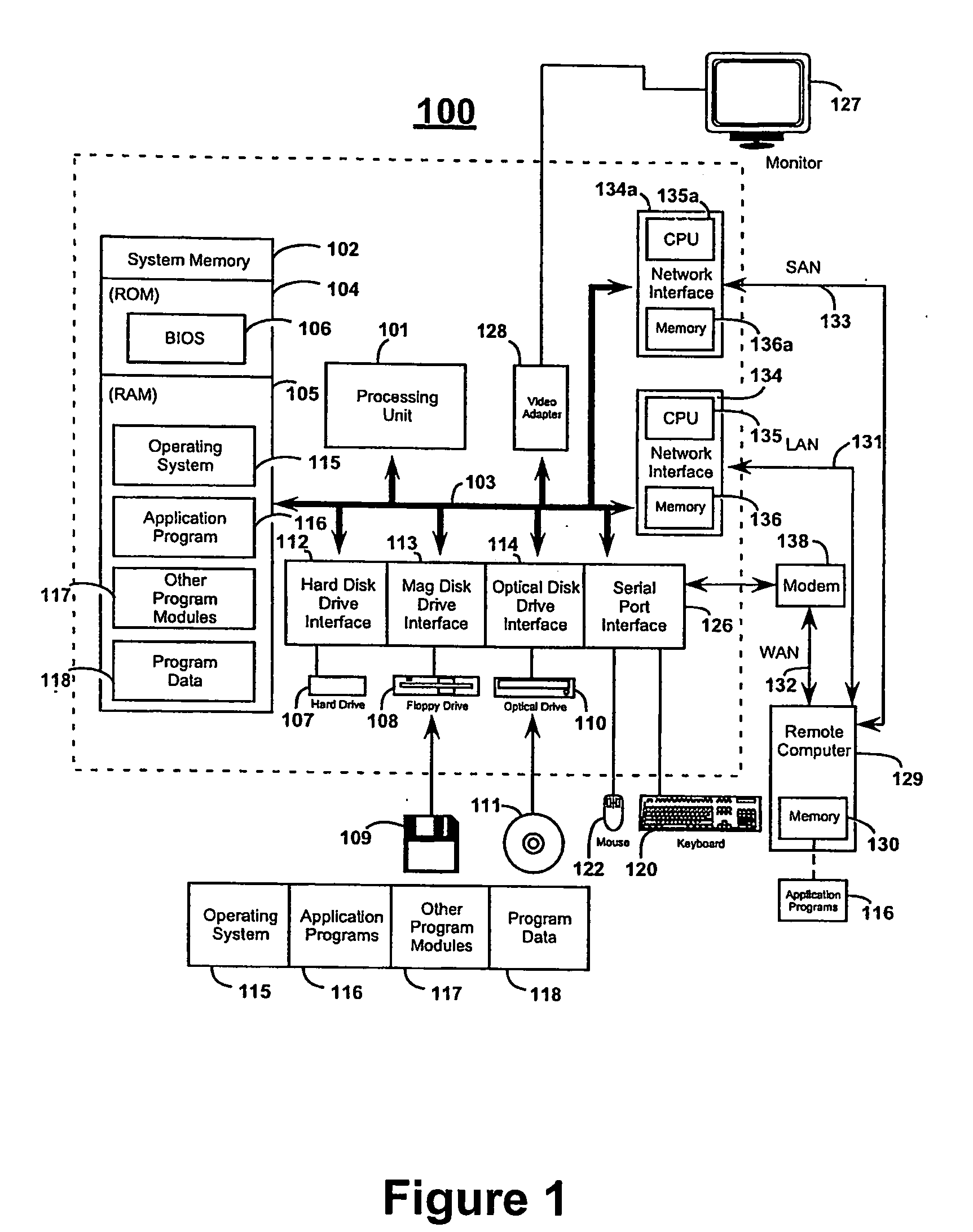Biological data set comparison method
a biological data and comparison method technology, applied in the field of biological data set comparison method, can solve the problems of lack of breadth, insufficient information to allow for the identification of a specific function of a gene, and other problems, to achieve the effect of reducing the number of errors, and avoiding the loss of information
- Summary
- Abstract
- Description
- Claims
- Application Information
AI Technical Summary
Benefits of technology
Problems solved by technology
Method used
Image
Examples
example 1
[0117] If input not FASTA format, read accessions and get FASTA sequences, [0118] Compare input sequences against entire bucket database (use BLAST-based identity search or simply accession ID lookup), [0119] For each input sequence, count number of matches to each bucket in database, [0120] Given the genome-size G, and the query set-size Q, compute hypergeometric statistic for each bucket possessing matches, based on bucket-size B and number of hits k. [0121] Sort the results list by decreasing significance and output webpage with results and hyperlinks to further details.
example 2
Analysis of Genes Regulated by E2F1
[0122] Stanelle reported 29 genes as being regulated by the transcription factor E2F1. Stanelle et al., 2002. The authors divided this set of genes into five categories: cell cycle, apoptosis, cancer-related, E2F1 targets, and unknown. Submitting the same unordered list in an embodiment of the present method results in a ranked list of approximately 100 buckets significant at p≦0.05. Presently there are approximately 80,000 buckets in the target database. These buckets have been created from a combination of publicly available databases and internal experimental results. These buckets cover many types of biological data including, but not limited to genomic location, diseases, tissue expression, functions, pathways, transcriptional regulation, families, domains, and literature abstracts. The most significant hits of this input set to the target database are shown in Table 1. Some of the sources which appear are keywords and families from Swissprot...
example 3
Pseudocode Genomic Region Analysis Embodiment
[0123] For each genomic region of interest, extract at least some and preferably all of the known genes contained therein. [0124] For each region set, compare each candidate sequence to the bucket collection (use BLAST-based identity search or simply accession ID lookup). [0125] For each bucket in the database, count number of region sets that contain at least one biomolecule in common with the bucket. [0126] Choose some constant M≦number of regions, and report all buckets that had hits to at least M regions. [0127] Use multivariate form of hypergeometric distribution to assess significance of these buckets. [0128] Given the number of regions and number of genes in each region, construct 1000 replicates of the region set (same number of regions and same number of genes per region), but placing the simulated regions at random chromosomal locations. [0129] Process this random data set in the same way as the real data, and note how many tim...
PUM
 Login to View More
Login to View More Abstract
Description
Claims
Application Information
 Login to View More
Login to View More - R&D
- Intellectual Property
- Life Sciences
- Materials
- Tech Scout
- Unparalleled Data Quality
- Higher Quality Content
- 60% Fewer Hallucinations
Browse by: Latest US Patents, China's latest patents, Technical Efficacy Thesaurus, Application Domain, Technology Topic, Popular Technical Reports.
© 2025 PatSnap. All rights reserved.Legal|Privacy policy|Modern Slavery Act Transparency Statement|Sitemap|About US| Contact US: help@patsnap.com



